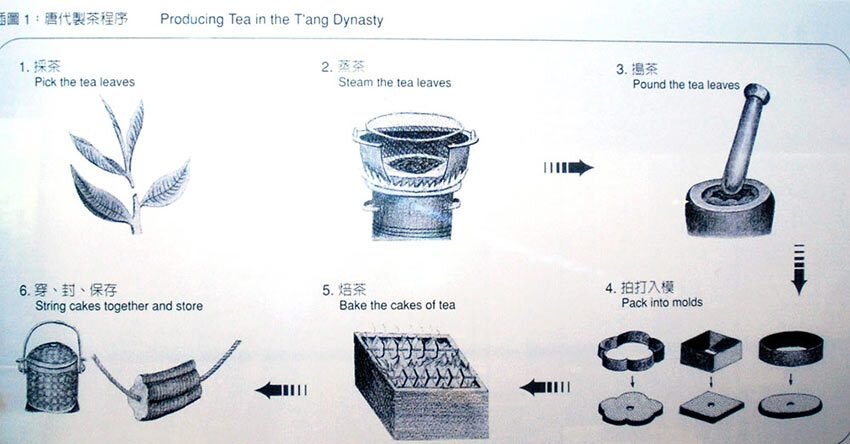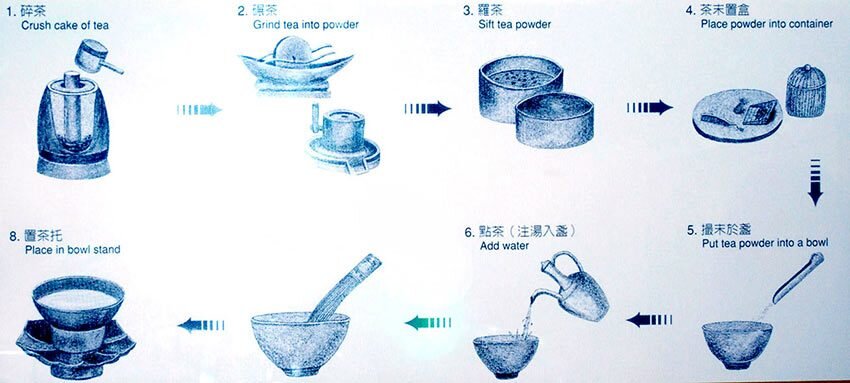7 centuries have passed since tea became an agricultural plant. In the days of Tang tea further strengthened its position as an inspiring beverage but not only a medicinal one. It was popular at court, among poets and artists, Buddhists, Taoists and Confucianists, every inmate of the Heavenly Empire have been enjoying the cup of fragrant tea. Farmers, who grew, harvested and dried tea gradually elaborated its additional processing techniques.
Lu Yu’s «Tea classic» describes it as simple as that: «In fine weather they gather, steam, knead, dry, thread, seal. This is how dry tea is produced.»
Such tea is different from the tea we drink now. Note that in those days tea was steamed while today it undergoes roasting procedure. Steaming of tea is still practiced only in Japan and supposedly in Korea. This steaming softened the leaf and enabled to compress it into cakes for storage and transportation convenience.
This process is also documented by Ly Yu in «Tea classic»: «Hold the tea brick upon the fire repeatedly turning it around until toasting makes it look like the bumpy back of a toad… In time of the second boiling remove one scoop of water from the pot. Using bamboo tongs stir the water creating a swirl in the middle and throw the measured amount of ground tea in the center. The powder will descend to the bottom of the pot. As soon as boiling becomes similar to rushing and splattering waves stop it by adding back previously removed scoop of water to make the flavor more exquisite. When ladling the tea into cups spread the foam and froth evenly. Foam and froth are the essence of the brew.
As the tea has been steamed it still remains aggressive. Before boiling it should have been toasted on an open fire. Ground tea was boiled in a pot as no teapots existed at that time and from the pot it was ladled into tea cups. We can only guess what the tea froth was like as now we use leaves instead of powder.
In this particular time the tea evolves from mere invigorating medical herb into standalone delicious beverage. Adding of other products that distort the taste of the tea is criticized. The water boiling process is attended more carefully not to overboil the liquor. However the salt is still added to the tea: «Should one discard the salt and the tea will be bland, wouldn’t the taste of the liquor in the cup be monotonous then?» («Tea Classic» Lu Yu).
Lu Yu’s «Tea Classic» became a breakthrough work as it made general public aware of the tea not being a simple product but an art. And sophisticated people should drink duly harvested and skillfully prepared tea. Induced thereby first tea ceremonies appear as delicious beverage requires fine serving. This was the way of living in the highest quarters of Chinese society and especially at court. Everything served to the Emperor required ritual.
In the time of Song dynasty (960–1279) tea is actively spreading around the country: tea houses emerge all over China, tea becomes a nationwide tradition.
Those who are acquainted with the Japanese tea ceremony may be quite surprised as it is very much alike. Indeed Japan has borrowed tea processing and brewing technique from China exactly in 10–12 century. In Japan this particular ceremony became a part of secular culture and never changed, while in China they whisked it for some time and took completely different route.



